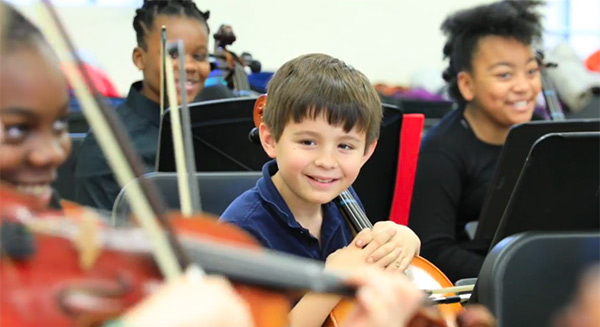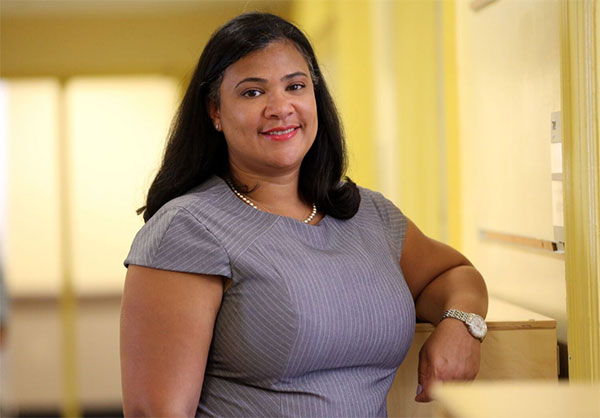Building the Foundation

Some children happily shouted out their names, while others spoke so softly you could barely hear them. After completing the circle, Sandfort read from The Animal Boogie, a sing-along book that encourages children to guess the animal on each successive page and dance with it as it boogie-oogie-oogies through the Indian jungle.
Afterward, the children locked arms and swirled around the room, screeching with delight. Sandfort and her assistant teachers distributed percussion instruments, and the students banged the drums and hip-checked the tambourines.

“Music is now engrained in the school and it enhances the children’s’ lives and opens their minds.”
— Michelle Verdiner, Principal, Teachers College Community School
To the untrained eye, it all just looked like kids having fun – but research shows that such seemingly simple musical activities have beneficial effects on children’s motor abilities and spatial reasoning and brain structure. The brain stem, which helps the right and left hemispheres “talk” to each other, is thicker in people who studied instruments at an early age.
“Music is a tool for well-being that students at every age can access,” says TCCS music program architect Lori Custodero, TC Associate Professor of Music & Music Education, who studies the social, cultural, creative and self-regulatory functions of the music young children make. “Musical experiences require focus and anticipation. Songs, recordings and sound-makers invite imagination, and serve to comfort as well as to communicate and express emotions. Seeing yourself as a musician through creating recognizable musical sounds encourages self-efficacy – evidenced-based perceptions of self-worth.”
TCCS employs a “sound before symbol” approach which holds that before children learn notation and scales, they need to discover and experience music through their senses.
“We meet the children where they are developmentally,” Custodero says. “We get to know each child and we teach to their emerging strengths with a spirit of creativity. The teachers enter their classes with planned music lessons, but like jazz musicians they harmonize and riff with the children’s musical readiness on any given day.”
Michelle Verdiner, TCCS’s Principal, says she is particularly grateful to TC’s Music & Music Education program for providing “young energetic music teachers who know how to engage the children at their level.” In the College’s progressive tradition, the teachers help children to enjoy and make music they know – hip hop, rhythm and blues and pop – while introducing them to less familiar genres. The TCCS choir, for example, sings in Zulu and Hebrew.
“If I were a child again, I’d love to be in the violin class here,” says Music & Music Education doctoral student Katy Ho, a Juilliard-trained violist who assists with the orchestra. “As a musician, it is the greatest thing for me to see the students love music. It is something I’ll never forget.”
Related Articles
Published Friday, Sep 8, 2017